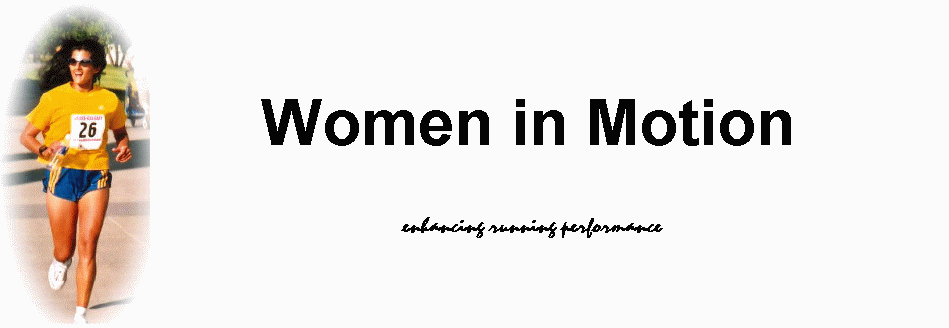MENU
 Home Home
 Programs Programs
 Who
Are We? Who
Are We?
 Articles Articles
 Products
We Recommend Products
We Recommend
 Topic
of the Month Topic
of the Month
 Books
on Running Books
on Running
 In The News In The News
 Past Newsletters Past Newsletters
|


Dealing With Achilles Tendonitis
General advice all the time:
- Do some type of a warm up before you stretch. This could be in the form of a slow
jog as you start your run and continuing during the beginning of a run.
- Include stretching after your run as part of your cooldown.
- If you have a sports injury, rest the area to allow it time to heal. This might be a good
time to concentrate on some cross training.
The Achilles Tendon
The Achilles tendon is the connection between the heel and three muscles: the two
heads of the gastrocnemius and the soleus. The gastrocnemius is a muscle that crosses
three joints: the knee, the ankle, and the subtalar joint.
A tight hamstring can affect the functioning of the ankle and subtalar joint, and it can
increase tension in the achilles tendon.
The soleus muscle does not cross the knee.
Contributing Factors to Achilles Tendonitis
There are several factors that can contribute to achilles tendonitis:
- Ignoring the pain and running through the pain of early achilles tendonitis. If an
achilles tendon is sore, pay attention to it immediately.
- Sudden increases in training can contribute to achilles tendonitis.
- Excessive hill running or a sudden addition of hills and speedwork can also
contribute to this problem.
- Incorrect footwear.
- The first is a sole that is too stiff, especially at the ball of the foot ( the spot right
behind the toes).
- The second is footwear with excessive heel cushioning in the shoe design.. Air filled
heels are not good for a sore Achilles tendon. This will cause the heel to sink lower while
the shoe is absorbing the shock. This stretches the Achilles tendon stretches when the leg
and body move forward over the foot. Wear a pair of shoes without air filled heels.
- Tightness of the rear leg muscles, the calf muscles and the hamstrings that may
contribute to Achilles tendonitis.
What Can I Do?
- Cut back your training.
- Train less each day and take one or two days off per week.
If you are working out every day cut back to every other day and decrease your mileage.
Training modification is essential to treatment as this problem has the potential of lasting
a long time..
- Also cut back on hill work and speed work.
- Icing after running may also help.
- Avoid excessive stretching as excessive stretching is not good for your Achilles
tendon.
- Don't walk barefoot around your house, avoid shoes that are not your regular runners,
especially flat shoes.
© Women in Motion April 1.2006
|

